Welcome to “Tips From Sticks-In-The-Mud Woodshop.” I am a hobbyist who loves woodworking and writing for those who also love the craft. I have found some ways to accomplish tasks in the workshop that might be helpful to you, and I enjoy hearing your own problem-solving ideas. Please share them in the COMMENTS section of each tip. If, in the process, I can also make you laugh, I have achieved 100% of my goals.
Wheels.
What did the invention of the wheel mean to mankind’s development? The significance can’t be overstated.
Nor can wheels’ value be overstated in the one-man woodshop. In mine, everything is on wheels.
It starts with the UniSaw. I was about to order mine without the optional mobile base, when the lady on the phone said, “I deal with this all day long. Someone calls for a part, and they don’t have the model number. The shops with saws sitting on the floor have to stop everyone’s work to move the saw and extension table. The shops with wheels? ‘OK, I’ll be right back.’ And, in 15 seconds, they have the model number.”
I was sold.
It worked out so well that I ordered my Delta jointer with the factory mobile base.
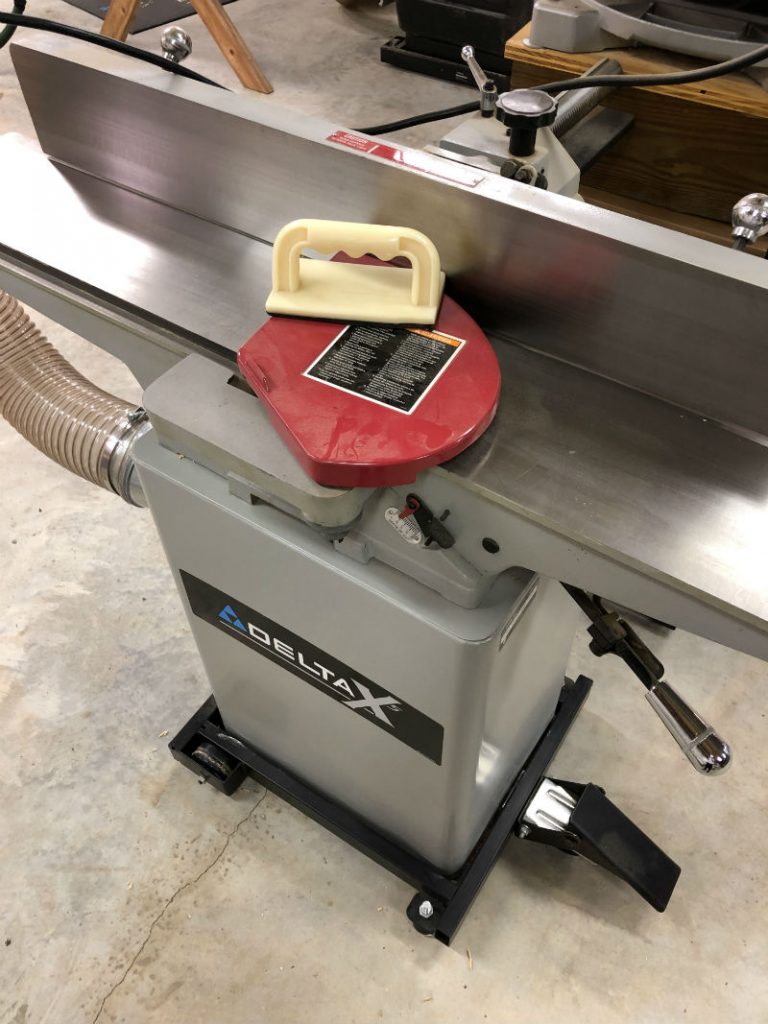
Then, when I bought a DeWalt planer I sprang for the factory base, which is really a platform. I could have started with a universal mobile base and just built a cabinet, and, if I had to do it over, I would probably do that. I’m tall, and I found that adding some height made using the planer much, much easier. I ended up adding 6 x 6s plus a sheet of 3/4″ plywood to make the height comfortable.
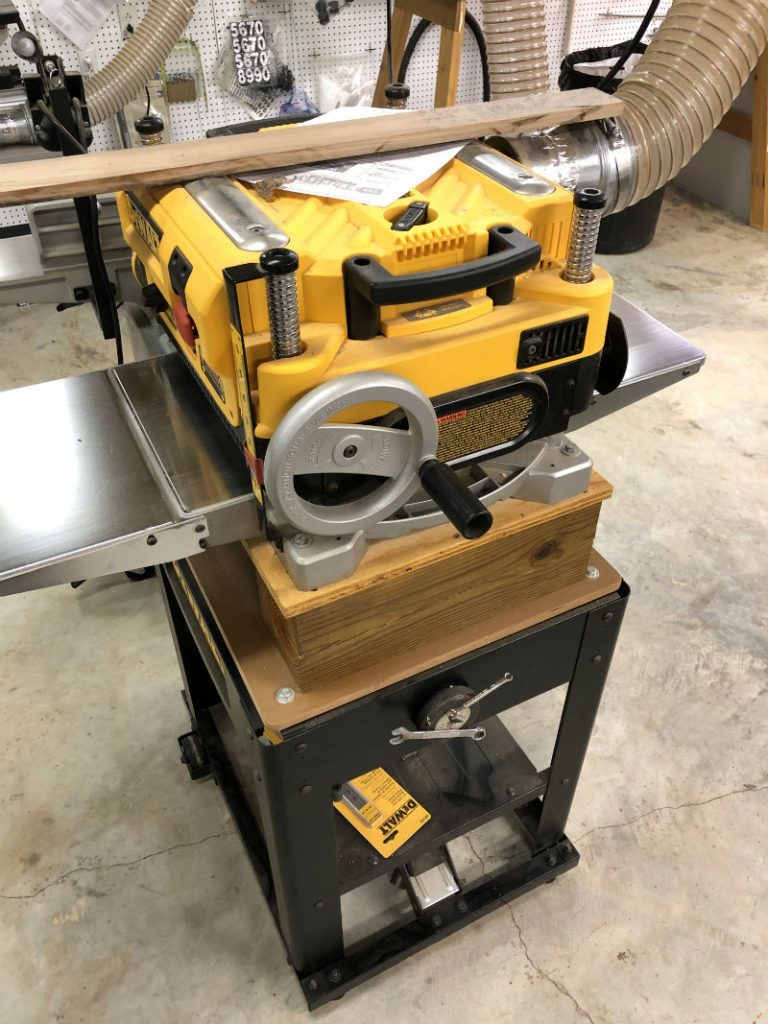
Click here to read the story of these bedside tables. When I delivered the new tables to the bedroom I couldn’t bring myself to put these on the burn pile, so I turned them into useful shop furniture and storage. Not pretty, just useful.
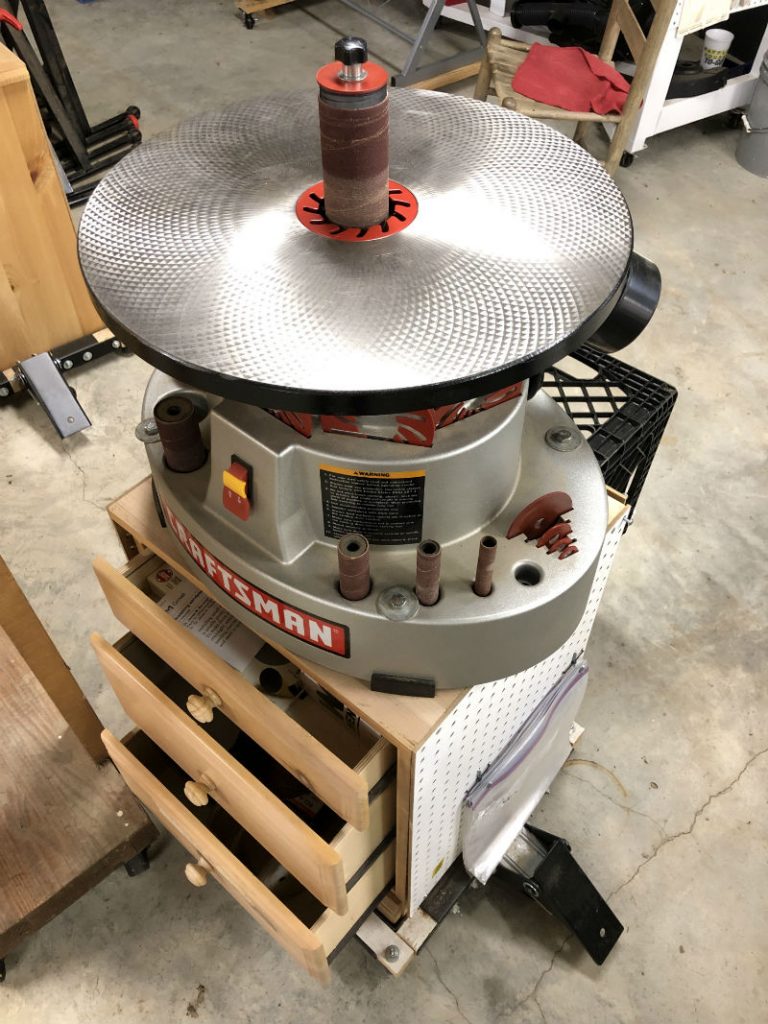
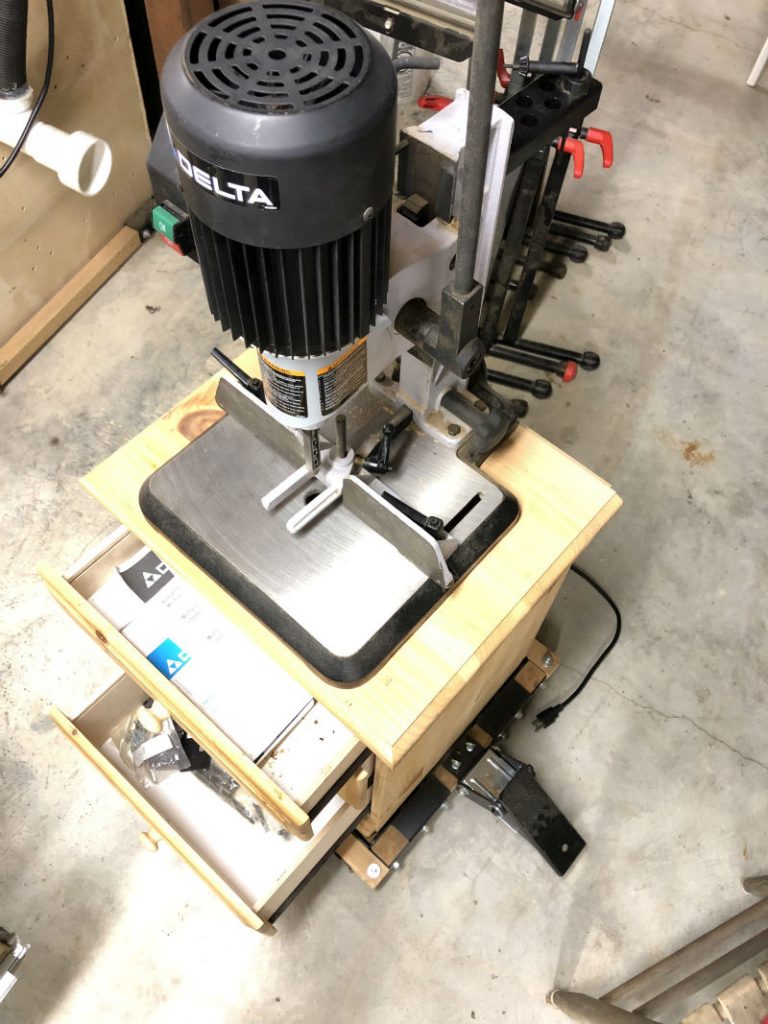
Ditto for the yet-unfinished Norm Abram Router Station.
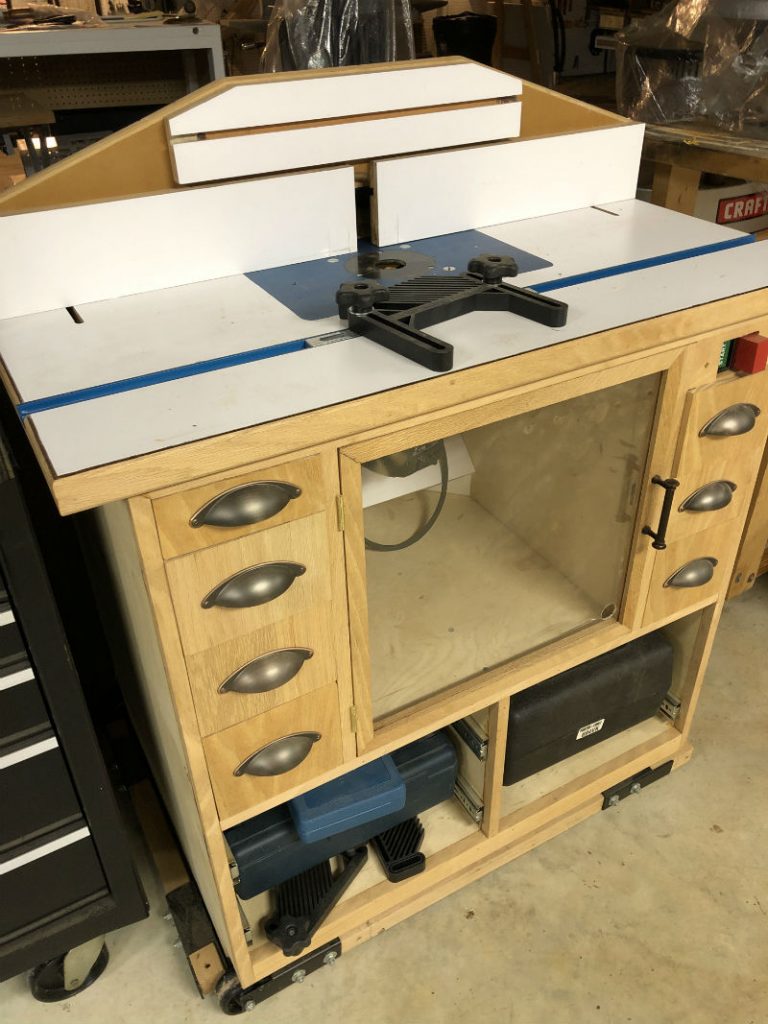
The best thing about having tools on wheels is that the infrequently-used tools can be in a different part of the shop and not clutter the main working area. It’s both safer and neater.
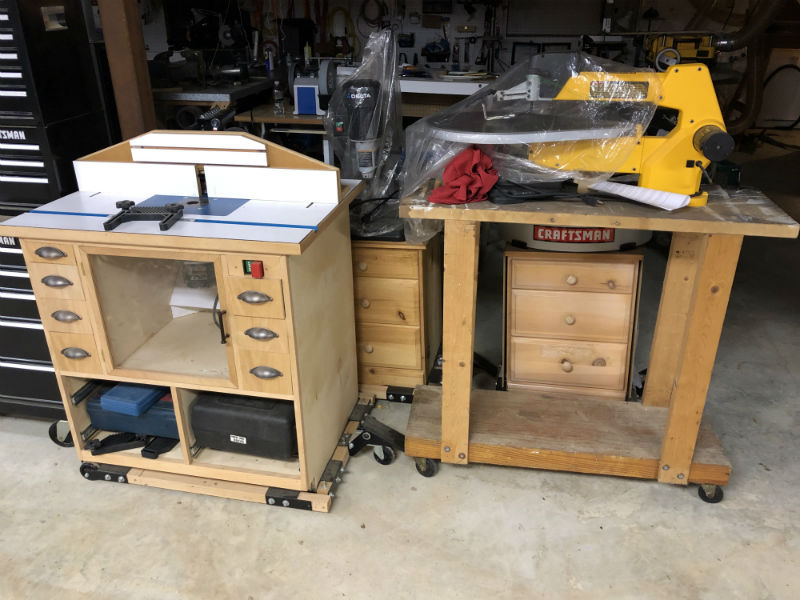
Jim Randolph is a veterinarian in Long Beach, Mississippi. His earlier careers as lawn mower, dairy farmer, automobile mechanic, microwave communications electronics instructor and journeyman carpenter all influence his approach to woodworking. His favorite projects are furniture built for his wife, Brenda, and for their children and grandchildren. His and Brenda’s home, nicknamed Sticks-In-The-Mud, is built on pilings (sticks) near the wetlands (mud) on a bayou off Jourdan River. His shop is in the lower level of their home.Questions and comments on woodworking may be written below in the comments section. Questions about pet care should be directed to his blog on pet care, www.MyPetsDoctor.com. We regret that, because of high volume, not all inquiries can be answered personally.


Great tips on mobility. Most of my power tools (radial arm saw, shopsmith, etc.) are on wheels. One that I am having trouble with is my floor-standing drill press. Any suggestions?
I have the same problem with my Jet floor standing drill press. Love to hear some good ideas for making that top-heavy son-of-a-gun mobile!!
I made a mobile base for my very heavy floor standing drill press from some thick angle iron and bolted it to the bottom . I put the drill press on blocks to do this. I started by jacking up the front using a floor jack and a 2×4 wedged under the table then worked from back to front sliding under blocks until it was high enough to tighten bolts through holes that I drilled in the base. I used some thick wide angle iron to which I bolted the wheels so they had room to rotate 360 degrees.If you’d like to see a picture you can just go and look at the base on my drill press in this months Highland Woodworking featured shop.
Here’s the link to Dan’s shop: https://www.highlandwoodworking.com/workshop-ideas/dan-hellyar-show-us-your-workshop.html
Jim,
I found another solution for the height of my DeWalt planer and Jet drum sander, which reside on rack shelving out of the way. I bought a HF Hydraulic Table Cart and built a small work bench top with vise and dog holes. When I need the planer, drum sander or other small bench top tools I roll the cart to the rack raise it to the shelf level and slide the tool on top.
The Hydraulic Table Cart works great for bringing any tool to a good working height and also works as moveable workbench. All my other tools accept the miter saw are on wheels.